The Horn
By Mitch Stirling
Like the horn of an old rhinoceros, the 'Horn' of Africa has been the focus of some very disturbing news over the years.
In1936 Benito Mussolini's troops invaded the ancient Kingdom of
Abyssinia in the Horn. Halie Selassie's instructions to his troop
commander was tragically comical: "One should leave large open roads
and wide meadows and march in valleys and trenches and by zigzag
routes along places which have trees and woods. When an aeroplane
comes to drop bombs it will not suit it to do so unless it comes
down to 100 metres; hence when it flies low, one should fire a
volley with a good and very long gun and then quickly disperse. When
three or four bullets have hit, it is bound to fall down".
Hopelessly naive and completely ignorant of the devastating power of
aerial bombardment - death from the skies - 'His Imperial Majesty,
Conquering Lion of the Tribe of Judah, King of Kings, Elect of God',
fled to England.
The Horn hit the headlines again in 1940 when Mussolini's jingoistic
posturing from the Palazzo Venezia in Rome became a reality and the
fascist 'Caesar reincarnate' made his next move by attacking British
Somalia. Anticipating this aggression, No 1 Squadron of Southern
Rhodesia Air Force had been moved up to the front line in 1939 for
advanced training and acclimatization in Nairobi/Isiolo in support
of Allied ground troops. By 22 April 1940 - the date 237 (Rhodesia)
Squadron adopted its new name - it was skirmishing along the
Kenya/Ethiopia border with an Italian East Africa force of
over 300 000 men and 200-300 aircraft. The aristocratic figure of
Amadeo, Duke of Aosta, Viceroy of East Africa was
Commander-in-Chief. Educated at Eton and Oxford, Amadeo was a
powerful adversary with all the skills of modern tactical warfare at
his finger
tips and supported by a sophisticated infrastructure of roads and
aerodromes and communications. His Regia Auronautica was formidable,
with long arms of logistical support. The Italians in East Africa
were confident, well-trained and very well-equipped. "Your
highness", said one war correspondent when addressing him. "One
hundred and ninety six centimetres", came the reply. He had
humour too...!
Initial encounters along the border were 'hit-and-run' bombing
excursions from Italian aircraft which degraded Rhodesian morale.
Several Hawker Hardys of 237 Squadron were destroyed on the ground
and there was an unfortunate fatal accident when two members of the
squadron failed to return from a reconnaissance mission. It was soon
clear that the Hawker Audax and Hardys flown by Rhodesians were no
match for the Regia Aero with their Caproni and Savoia bombers (the
Pipistrello 'bats' and Sparviero 'sparrowhawks') and Fiat CR32/42
fighters. They were out-gunned and out-manouevred. And it was not
until the arrival of Gloster Gladiators and Westland Lysanders,
striking from the Sudan, that the odds began to swing and Italian
aggression waned. The Gladiators and Fiat CR42's were very similar
in speed and manoeuvrability, but the Gladiators were radio equipped
which made a huge difference in planning aerial combat. Even so, RAF
Hurricanes were impressed after five of their Glad's were knocked
down in the first hour of engagement.
Hawker Hart of Southern Rhodesia Air Force. Most widely-used light bomber of its time. With Audax and Hardy variants.
By January 1941 there were only 67 Italian aircraft left in the
sky over East Africa and by October 1941 it was all over. The last
big battles took place in Italian Eritrea with the enemy on the back
foot and the Allies pushing them hard into the Red Sea. Amadeo
surrendered finally on 19 May at his 'impregnable' mountain fortress
of Amba Alage. If not for the contamination of his water supply he
would have held the fort to the bitter end. Full military honours
were afforded him for his gallant resistance. He later died in a POW
camp in Nairobi of tuberculosis and malaria. But victory took a
heavy toll on the ranks of 'the lost squadron' - a little group of
Rhodesians who fought in remote, unfriendly places. Some of them are
memorialised on 'Rolls of Honour' in schools and churches around
Zimbabwe and South Africa, along with other airmen killed at later
stages of the War. Four pilots and five air gunners of 237(Rhodesia)
Squadron were lost in eighteen hard months in East Africa. It was a
particularly nasty corner of WW11 that is often overlooked in the
history books, but it was crucial in defence of the Suez canal. Two
DFC's were awarded, two DFM's and five Mentions.
I am in awe of men who fought so hard for King and Country and in
particular... those who paid the ultimate price. What a travesty
that the same country today has chosen to turn its back on those
individual acts of valour and national sacrifice... in favour of
political appeasement. What an outrage that one Mengistu Halie
Mariam, mass murderer from Ethiopia, lives in luxurious exile in Gun
Hill, Harare!
Sergeant Ken Murrell of 237 Squadron won the DFM as an observer/gunner
on a Hardy during the action in Eritrea. His pilot was Ron Christie.
Ken Murrell was Chief Pilot RUAC in 1975 when he won the Pat Judson Trophy. He was a wonderful man and an excellent flying instructor. His civilian career included time with the Department of Civil Aviation and DC3 operations with Hunting Clan. He also flew with Roy Smart at Lesbury Estate near Rusape, that well-known check point between Salisbury and Umtali that every learner cross-country pilot knew so well.
Ken Murrell was Chief Pilot RUAC in 1975 when he won the Pat Judson Trophy. He was a wonderful man and an excellent flying instructor. His civilian career included time with the Department of Civil Aviation and DC3 operations with Hunting Clan. He also flew with Roy Smart at Lesbury Estate near Rusape, that well-known check point between Salisbury and Umtali that every learner cross-country pilot knew so well.
The Examiner 26 Feb 1941:
'Two young Rhodesian fliers received the highest honour as the crew of a reconnaissance plane who shot down an Italian bomber and then survived threat of death from a plane crash' Ian Pringle wrote:
Miles Johnson, like John Nettleton VC, went to Western Province Preparatory School (Wetpups). My son did a project at Wetpups on Johnson and came up with the following: 'Flying Officer Miles Johnson and his air gunner Sergeant JGP Burl were flying a reconnaissance mission in a Lysander aircraft near Scipitole in Central Eritrea when he spotted three Italian Caproni bombers. He did not see any escort fighters so he attacked the bombers. He shot one down but suddenly three Fiat CR42 fighter aircraft attacked Johnson’s plane, shooting away the controls, and Burl’s wrist, forcing Johnson to crash land. Despite his pain and loss of blood, Burl managed to drag the unconscious Johnson from the wreckage. Burl carried Johnson on his shoulders for two days before they reached British lines. Johnson was awarded the Distinguished Flying Cross (DFC) and Burl received the Distinguished Flying Medal (DFM)'. P.S. Miles Johnson took command of 208 Squadron in North Africa during 1942 and 1943. But he died in an air accident in Italy on 28 September 1944, when flying as a passenger in an aircraft that had to ditch. Apparently drowned trying to save a passenger from the stricken plane.
'Two young Rhodesian fliers received the highest honour as the crew of a reconnaissance plane who shot down an Italian bomber and then survived threat of death from a plane crash' Ian Pringle wrote:
Miles Johnson, like John Nettleton VC, went to Western Province Preparatory School (Wetpups). My son did a project at Wetpups on Johnson and came up with the following: 'Flying Officer Miles Johnson and his air gunner Sergeant JGP Burl were flying a reconnaissance mission in a Lysander aircraft near Scipitole in Central Eritrea when he spotted three Italian Caproni bombers. He did not see any escort fighters so he attacked the bombers. He shot one down but suddenly three Fiat CR42 fighter aircraft attacked Johnson’s plane, shooting away the controls, and Burl’s wrist, forcing Johnson to crash land. Despite his pain and loss of blood, Burl managed to drag the unconscious Johnson from the wreckage. Burl carried Johnson on his shoulders for two days before they reached British lines. Johnson was awarded the Distinguished Flying Cross (DFC) and Burl received the Distinguished Flying Medal (DFM)'. P.S. Miles Johnson took command of 208 Squadron in North Africa during 1942 and 1943. But he died in an air accident in Italy on 28 September 1944, when flying as a passenger in an aircraft that had to ditch. Apparently drowned trying to save a passenger from the stricken plane.
Vanguard in the Sky we salute you
End
Thanks to Mitch for sharing this great article with ORAFs.
Comments are welcome, please enter them below or mail them to orafs11@gmail.com and they will be uploaded to this article.
To view the Blog Home Page - Please Click Here.
(Please visit our previous posts and archives)
Thanks to Mitch for sharing this great article with ORAFs.
Comments are welcome, please enter them below or mail them to orafs11@gmail.com and they will be uploaded to this article.
To view the Blog Home Page - Please Click Here.
(Please visit our previous posts and archives)
Ref. Rhodesian Air Force, ORAFs, Rhodesian Aviation
Labels: 237 (Rhodesia) Squadron, Mitch Strling
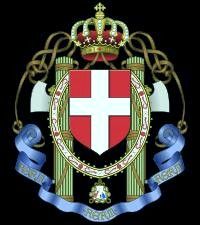

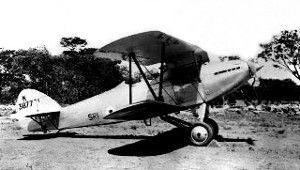
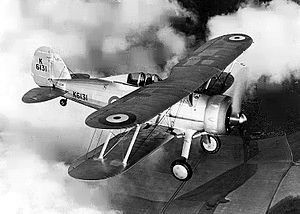
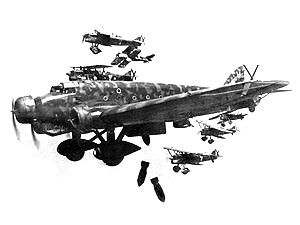
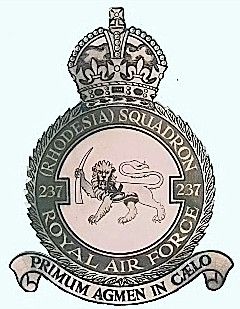


1 Comments:
Comment from Air Marshal (retired) Sir John Walker KCB CBE AFC. via Mitch Stirling (Air Rhod.)
Thank you for that. Very interesting. As you say, there were parts of the WW2 that tend to be forgotten.
Next time I am there, I shall see whether 237’s crest is hung in the RAF Club. I have an idea that I have seen it there. I shall let you know.
Post a Comment
Subscribe to Post Comments [Atom]
<< Home